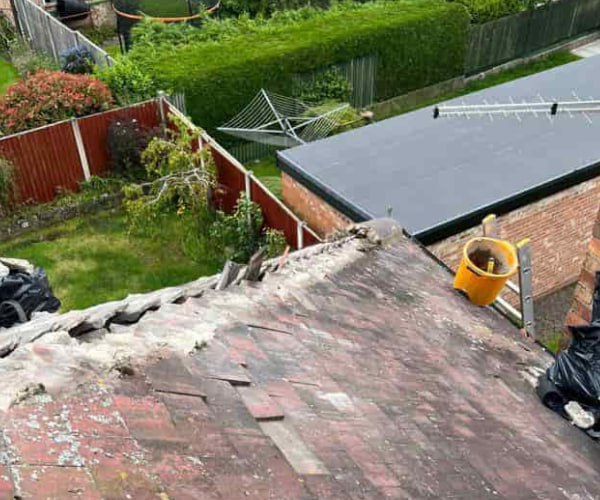The Benefits of Replacing Old Fascias and Soffits
When it comes to maintaining the integrity of your roof, fascias and soffits play an essential role. While they are often overlooked, these components are crucial for both the aesthetic appeal and functionality of your home. Over time, fascias and soffits can wear out, becoming damaged or deteriorated. In this blog post, we’ll explore the many benefits of replacing old fascias and soffits, and why it’s a wise investment for your home.
What Are Fascias and Soffits?
Before delving into the reasons for replacement, it’s important to understand the roles of fascias and soffits.
- Fascias: These are the long boards that run along the edge of your roof, supporting the bottom row of tiles and providing a surface for your guttering system to be fixed to. Fascias protect the roof structure from the elements while offering a clean, finished look.
- Soffits: Positioned beneath the fascia, soffits cover the underside of the roof’s eaves. They provide ventilation to the roof space, allowing air to circulate, which helps to prevent condensation and potential structural issues.
Both of these components are essential for protecting your home’s roof from damage and ensuring the efficient function of your gutters and ventilation system.
Why You Should Replace Old Fascias and Soffits
1. Enhanced Protection Against the Elements
Old and deteriorating fascias and soffits can leave your roof vulnerable to water damage, pests, and even severe weather conditions. As these elements wear down, they can no longer effectively protect the underlying structure of your roof. By replacing them with new, high-quality materials, you ensure that your roof remains well-protected against the harsh British weather. This will also help to prevent issues like damp, wood rot, and water ingress, which can lead to costly repairs down the line.
2. Improved Energy Efficiency
Proper ventilation is essential to maintaining a well-ventilated roof space. Over time, soffits may become blocked or damaged, restricting airflow and causing moisture to build up. This can lead to mould growth and excessive heat during the summer months, making your home less energy-efficient. By replacing old soffits, you can restore adequate ventilation and prevent these issues, helping your home stay cooler in the summer and warmer in the winter. In turn, this can reduce your reliance on heating and cooling systems, lowering your energy bills.
3. Boosted Curb Appeal
Fascias and soffits may not always be the most visible parts of your home, but they still contribute significantly to the overall appearance of your property. Old, faded, or damaged fascias and soffits can make your home look tired and unkempt, even if the rest of the property is in excellent condition. By upgrading to new fascias and soffits, you instantly improve the visual appeal of your home, enhancing its curb appeal and increasing its market value.
4. Reduced Maintenance Costs
If you allow your fascias and soffits to deteriorate without replacing them, you risk facing more costly repairs in the future. As water infiltrates, the damage can spread to the roof structure and even the interior of your home. Replacing worn fascias and soffits proactively can save you money on expensive repairs and extend the lifespan of your roof and gutter system. This simple upgrade offers long-term financial savings and peace of mind.
5. Enhanced Pest Prevention
Old, damaged soffits and fascias provide a perfect entry point for pests, such as birds, insects, and rodents, to make their way into your home. These pests can cause significant damage to your roof and home, leading to additional problems such as insulation damage and even electrical issues. Replacing your fascias and soffits with durable, pest-resistant materials helps keep these unwanted invaders at bay, offering you better protection.
Choosing the Right Materials for Replacement
When replacing fascias and soffits, it’s essential to choose materials that are both durable and suited to your property’s needs. Popular options include:
- UPVC (unplasticized polyvinyl chloride): A popular choice for fascias and soffits, UPVC is low-maintenance, weather-resistant, and comes in a variety of finishes. It’s durable and doesn’t require painting, making it an ideal choice for homeowners looking for long-lasting protection.
- Timber: If you prefer a more traditional look, timber fascias and soffits can be a beautiful option. However, they require more maintenance than UPVC, as they may need to be painted and treated regularly to prevent rot.
- Aluminium: Another durable choice, aluminium is resistant to rust and corrosion and offers a sleek, modern look. It’s often more expensive but is well worth the investment for long-term protection.
Conclusion
Replacing old fascias and soffits is more than just an aesthetic upgrade—it’s an essential part of maintaining the health and functionality of your home. Not only will new fascias and soffits provide better protection against the elements, but they will also improve your home’s energy efficiency, curb appeal, and pest resistance. Plus, by taking action now, you can prevent more costly repairs in the future.
If you notice any signs of wear or damage to your fascias or soffits, it’s time to consider a replacement. At SAR Roofing Biggleswade, we specialise in the installation of high-quality fascias and soffits tailored to your home’s needs. Contact us today to book a consultation and ensure your home remains well-protected for years to come.
Call us on: 01767 660 597
Click here to find out more about SAR Roofing Biggleswade
Click here to complete our contact form and see how we can help with your roofing needs.

